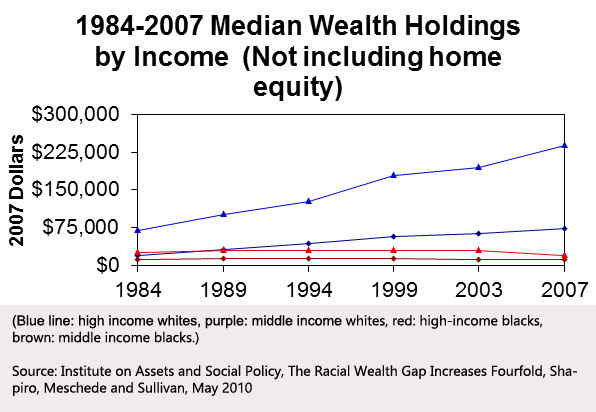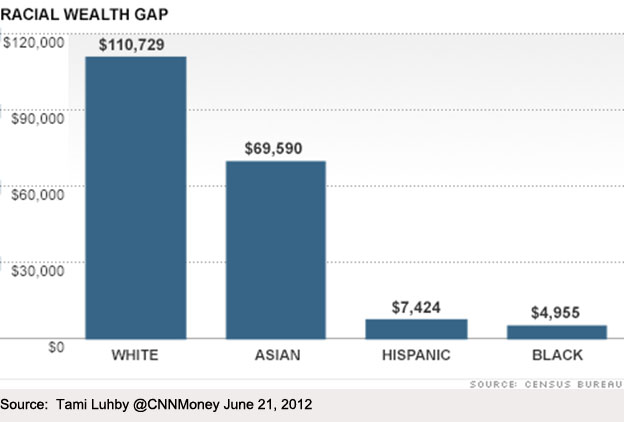How can poor rural communities escape poverty? In her acclaimed 1999 book, Worlds Apart, author Cynthia Duncan examined rural inequity through detailed portraits of communities in Appalachia, the Mississippi Delta, and northern New England. In a newly released second edition, she revisits these places and finds each confronting new challenges, including new political leadership, economic restructuring, and pervasive drug addiction. With a new foreword by PolicyLink Founder and CEO Angela Glover Blackwell, Worlds Apart: Poverty and Politics in Rural America shares new insights on the economic, demographic, and political realities reshaping poor rural communities. Duncan spoke with America’s Tomorrow about what she learned in going back to these rural places 20 years later.
What does your book tell us about poverty in rural America?
Like poor urban families, the rural poor are socially isolated, cut off from participating successfully in the mainstream — in school or the workplace, in civic life. Perception of poverty is wrapped up in ideology. Those on the right say it is all about bad decisions, bad behavior that cuts off opportunity. Those on the left say it is all about larger systemic problems, like racism, sexism, how opportunities for education and work are distributed across places and across classes. Worlds Apart shows how people’s decisions and behavior are shaped by the community and environment they are growing up in — not just their own immediate family and networks, but also the politics of the community and the way in which the powerful prevent change and opportunity.
How do power and politics shape opportunity in the places you studied?
In poor rural communities political power is tightly held by the few families who control the jobs and own land and other resources. The status quo works for them, so they prevent change that might bring new opportunities and they look out for their own families rather than investing in the whole community. For example, in the Mississippi Delta, everyone could name the few White families who ran things in the 1990s. Their grip was very tight on jobs, political office, everything. They made things hard for people who wanted to help the Black community and sought to bring about change. They could blackball those who dared to challenge their economic and political control.
But when you went back, things had changed.
When I went back in 2013, casinos had come to the Delta area, bringing jobs in housekeeping and restaurants as well as gaming tables. These new employers broke up the stranglehold that the White farmer families had over jobs. Twenty years ago, it was hard for a Black candidate to win elected office, despite the fact that 75 percent of the population was African American. In 2012 all the county supervisors elected were African American. Several of these leaders have been working with young people for decades, coaching and mentoring. Now they no longer face harassment and they control significant revenue from the casinos. If they can bring current spending under control, they can invest more in the Black community.
Everyone, White and Black and even the Catholic sisters, would say that the coming of the casinos opened up opportunities. Nonetheless, the legacy of racism and lack of educational investment is deep. The schools still struggle, and poverty is 30 percent today. The new leaders face huge obstacles as they try to take advantage of the jobs and revenue the casinos bring.
Are jobs the key to ending poverty and racial inequity in rural America?
The availability of jobs that pay a decent, family-supporting wage has a profound impact on not just individual livelihoods but also the way the whole community works. We’ve seen this across the country. Communities are struggling to adapt to the restructured economy, find new economic activity and jobs, and, this adjustment is happening at the same time that we’ve cut back on public investment in education and other institutions that can provide people the skills to do the middle-skill jobs that are now available. Jobs that pay decent wages are important, but so is investment in human capital and the institutions where it is acquired.
What else is needed?
Economic development in really remote places is very tough. But we can provide quality early childhood education and do more to support decent schools. Great research shows that providing early childhood education and support for fragile families in the long run really pays off.
Economic diversity also is important because it both protects against downturns and generates a more equitable, politically inclusive community overall. A more equitable community has greater trust, a stronger civic culture of cooperation and investment in inclusive institutions. New business and industry are attracted to communities that work for everyone and are not burdened with high poverty.
What did you find in the other communities when you revisited them?
The mills are gone in the northern New England community, but the civic culture is intact, and people still work together and are generally inclusive. Like much of rural America, the new jobs are as prison guards, in recreation facilities that attract outdoor enthusiasts, in the health-care and education sectors, in green energy projects. Fewer jobs that pay less, but provide some stability.
In the coal community one young man we interviewed in 2013 who had been a miner said that while it is not easy to let go, there is no denying that "coal is over." He now earns half what he did as a miner working for the county as a groundskeeper. You have Friends of Coal stickers and license plates everywhere, pushed by outside coal promoters, but jobs are way down and people are leaving. I found outmigration, pervasive painkiller addiction, high dependence on disability, and those who stay hunkering down with family for mutual support in a job-scarce community.
How are demographic changes playing out in rural areas?
We’re seeing a growing diversity across rural America, especially Hispanic newcomers. It is a very positive sign, not just because of demographic and economic growth, but for the vitality and energy coming into communities where coffins have been outnumbering cradles, as demographer Ken Johnson puts it. While there have been tensions, there are also great examples where newcomers are wrapped into the community through library programs and soccer teams.
There also have been important positive impacts with the return of African Americans in communities throughout the rural South. Their experiences and education elsewhere prepared them to become community and political activists. They saw a world where there was greater opportunity and more democratic politics, and they brought that back with them.
What are the lessons for rural America and the country as a whole?
Much of rural America is really struggling these days as the economy continues to change and communities try to adjust to new conditions, fewer jobs, less revenue to invest in infrastructure and local institutions. Communities that are inclusive and invest in public institutions that serve people from all social classes, that have a rich civic culture, offer a better life not only to the poor but also to the middle class.
When a community is more equitable, then everybody wins.
Read the rest of the January 8, 2015 America’s Tomorrow: Equity is the Superior Growth Model issue.

